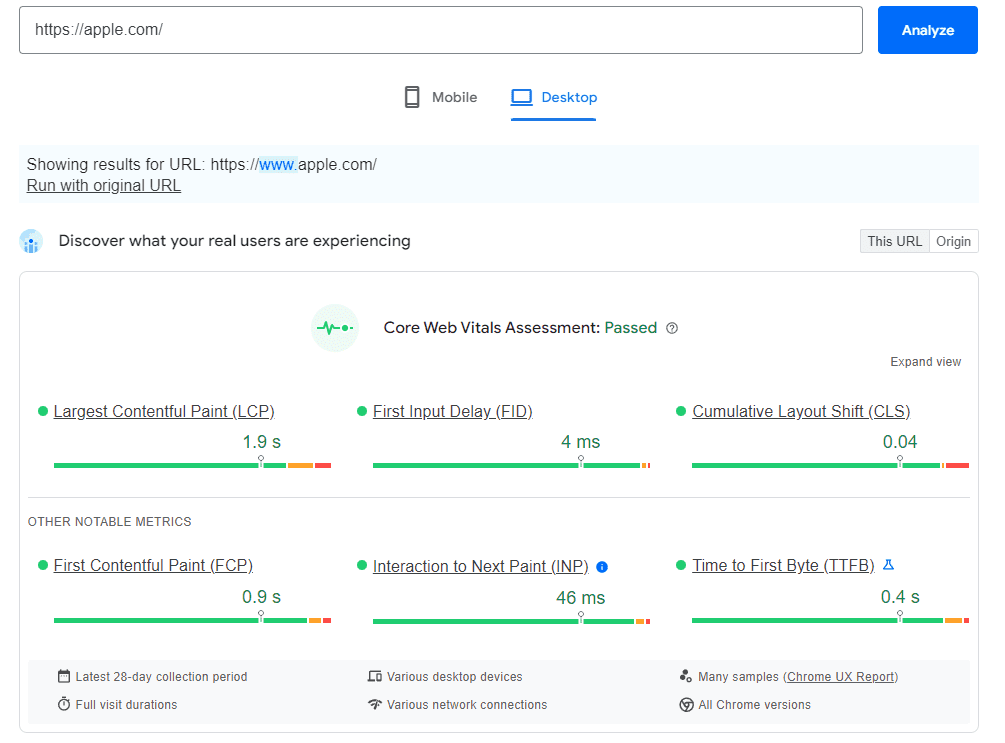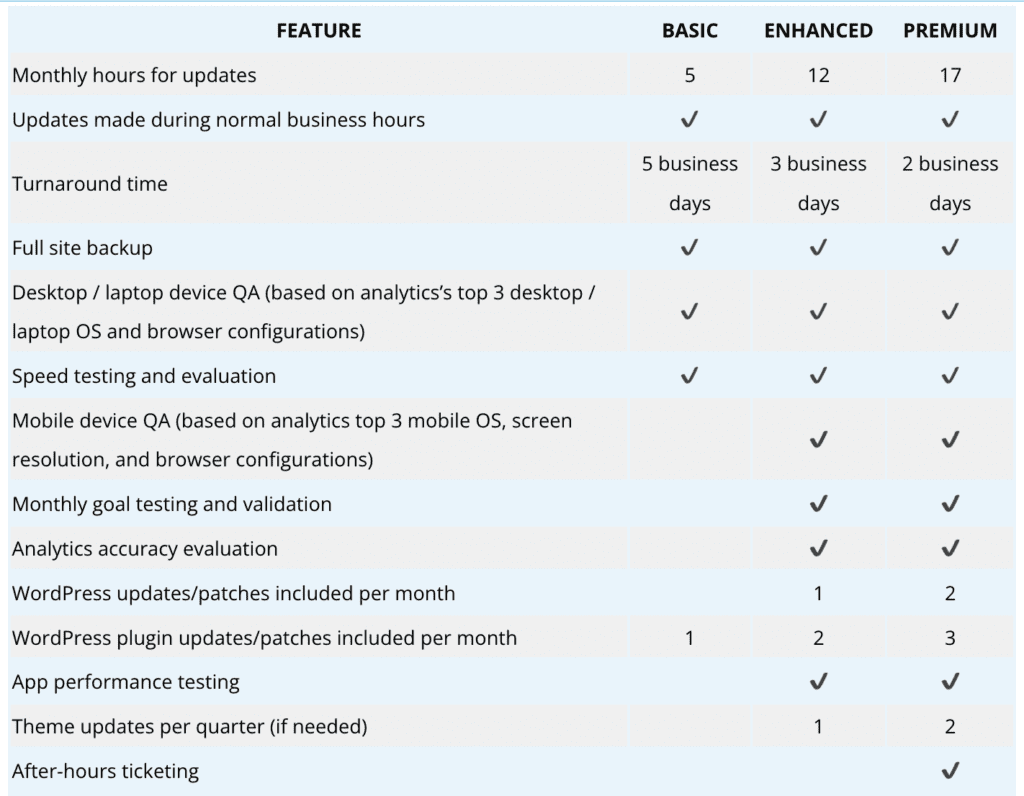Knowing how to maintain a website can make all the difference for businesses targeting sustainable, long-term growth. New brands often chase after top-of-the-line features and best-in-class website design, spending the vast majority of their budgets without realizing that the real work comes after the website goes live.
Management is an ongoing process that involves maintaining your website to guarantee it performs optimally, remains secure, and provides the ideal user experience demanded by customers. Use this Coalition Technologies guide to learn how to manage your website like a pro.

Table of Contents
Design
Web design often takes priority in website management plans because your website’s overall look and feel impacts nearly every other aspect of it, including user experience (UX) and even search engine optimization (SEO) performance.
UX
You can only really get a true measure of the effectiveness of your user experience once the website launches. In most scenarios, a well-designed website facilitates great UX that might slowly degrade over time if consumer tastes change drastically. For example, homepages with full-scale autoplaying videos were all the rage in the 2010s, and yet they’re declining now due to shortened audience attention spans and the shift towards minimalist and dynamic designs.
How to maintain a website’s UX design over the years? The answer is in the metrics. For example, bounce rates measure the amount of people that click off a page without taking action, and they’re essential for website management. Heat mapping is another tool that can measure user behavior and help you understand which elements need to be tweaked.
Call To Action (CTA)
Remember that no matter how well-designed a page might be, the end goal of your pages should always be to drive conversions, whether that involves making a sale or generating leads.
- Incorporate CTAs organically on your page. The design should naturally nudge the reader towards the CTA.
- You don’t want to overstuff your page with too many CTAs. They can confuse readers, encouraging them to click off the page for a better solution. Great website management recognizes that less is more.
- CTAs that include action words can increase conversions by up to 121%. Use terms like ‘Act Now’ or ‘Get Started’ to nudge your readers towards a faster decision.
- Use contrasting colors that highlight the CTA compared to the rest of the content. Trying to mislead visitors with deceptive or unclear CTAs can damage your reputation and harm your SEO performance.

Write For The Readers
SEO copywriting is an undervalued aspect of website management. Remember that you want to write for the readers, not search engines. Use these tips to stay ahead if you’re learning how to manage a website:
- Keyword stuffing will only get your website penalized by search engines. For example, you can plaster the words ‘how to maintain a website’ all over a new page about SEO, but search engines will not treat it as a relevant match if your readers click off the page within seconds in frustration.
- Tastes evolve with time and shift across industries. Make sure your copy strikes the tone your readers are looking for.
- Striking a balance is important. Don’t forget to follow SEO best practices while creating new copy to ensure it draws in the right audience.
CRO
Conversion rate optimization, or CRO, is a key part of website management responsible for turning promising new leads and visitors into paying customers. Losing sight of CRO can be incredibly costly for growing businesses investing in large campaigns to attract more traffic.
The smallest details make all the difference in CRO. If your metrics indicate that many customers are adding products to their cart without checking out, it means something is deterring them from hitting that final purchase button. This can be caused by anything from irrelevant copy to checkout pages that demand unnecessary information.

If you’re not entirely sure about the ins and outs of website management yet, use this example as a guide! This store (pictured above) keeps its required fields to an absolute minimum and also offers express checkout options to create a more frictionless checkout.
SEO
SEO is the practice of improving your website in a way that helps it rank better on search engine results pages (SERPs) and attract more traffic to your pages in the process. Effective website maintenance ensures that your website remains relevant for search engine algorithms in an ever-evolving digital space.
Keywords
If you’re learning how to manage a website, you need to understand that Google attempts to understand the underlying intent behind a query – not just the keywords used in it. This is why leading digital marketing agencies highlight the importance of writing for humans.
That said, keywords still play a role in helping search engines understand what each page is about. Use these tips to make the most of them:
- Keyword Tools: Popular tools like Ahrefs can make website management easier for beginners. Use an SEO tool to monitor your page’s performance based on its targeted keywords so you can course-correct early on.
- Long vs. Short-Tail: You don’t need to know how to maintain a website to understand the crucial difference between long and short-tail keywords. Short-tail keywords are general strings containing up to 2 terms, while long-tail keywords are much more specific. A small business struggling to rank well with highly competitive short-tail keywords could potentially see much better results optimizing for long-tail keywords.
- Local SEO: Optimizing for regional keywords can help your website attract visitors who are looking for a local solution. Consider including local SEO in your website management strategy if your business has a physical outlet.
Performance
A two-second increase in load time can increase the chances of a bounce by up to 32%. Your website’s overall performance reflects your brand’s trustworthiness for a visitor who has not shopped at your store yet. Keep these pointers in mind to make a great first impression:
- Hosting: There is a massive performance difference between hosting an image or video on your own server and using an embed from a third party or a CMS like BigCommerce. To manage your website’s performance like a pro, use a CMS that offers fast caching and reliable hosting to store important media files, like product images and videos.
- Overstuffing: Newcomers who haven’t quite figured out how to maintain a website yet will often make the mistake of stuffing their websites with plugins and unnecessary features that they don’t actually need. This only increases load times for your visitors.
Change With The Algorithm
Knowing how to manage a website requires businesses to stay up-to-date with the latest changes to Google’s algorithm. A single update can completely turn your website management strategy on its head and leave you wondering why the traffic has been down lately.
Google doesn’t always clarify the rationale behind every update either, which is why we recommend working with an SEO agency that can handle it for you. Otherwise, you can also use trusted sources like SEJ to read up on any new changes.
Maintenance
Quality Assurance (QA)
So, you’ve optimized your content for the right keywords, built a great conversion funnel, and cut down on those load times. How do you make sure everything stays in great shape?
- QA Testing: Regularly scheduled QA testing ensures your website performs well during periods of high traffic and server load. Website management pros will regularly QA important elements like contact forms and the checkout process using different browsers and devices to build a consistent experience.
- Custom Alerts: Learn how to maintain your website using custom alerts set up in GA4 or other tools. These alerts can instantly notify webmasters if tracking or functionality breaks on a page. Setting these up can save you the hassle of conducting frequent manual reviews.
Theme Updates
A single website can be made up of tools created by multiple third-party providers, including plugins, themes, and hosting services. These elements are constantly being updated to add new features, but they can also occasionally cause website management problems when things go wrong.
This generally isn’t a problem for brands working with proprietary website builders like Shopify or using a custom solution built by an agency. If you do need to find your own theme or plugin, look for popular options that receive frequent updates. This way, even if something goes wrong, you can rely on the developer to push out a patch quickly.
Security
92% of consumers believe security is an important factor influencing their online shopping. Knowing how to manage a website’s security is essential for any brand that wants to build a lasting relationship with its customers.

Pricing plan for Coalition’s WordPress Maintenance services
Your website management plan should lay out how you plan to maintain your website’s security. This includes picking a host that protects against DDoS attacks and phishing attempts. If you need to use plugins for your store, keep them to a minimum, as hackers can often exploit them as a backdoor.
Grow Your Website Today
Building a website that ranks well and drives sales is a process that requires meticulous attention to detail. Effective management covers all the bases, from security and performance to SEO.
If you need help creating the perfect website management strategy for your business, contact Coalition Technologies for a free consultation today. Our experts know what it takes to build an industry leader, all the way from web design to post-launch maintenance.


